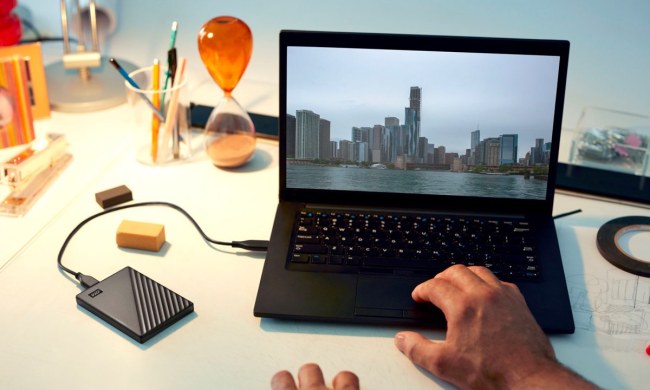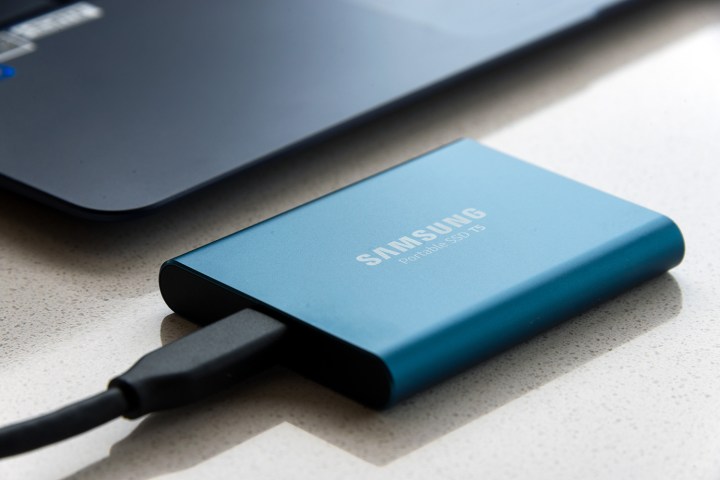
When it comes to learning how to choose an external hard drive, you need to consider what you want to do with the drive, how fast you need to be able to access the data on it, and how much you have to store on it. There are external hard drives with plenty of physical protection against the elements, external SSDs that give you super-fast data transfer, and huge external hard drives that are better for long-term backups. The best external drives often tick most of those boxes.
If it's not obvious what kind of external hard drive you need, or you need something that can do a little of everything, here are some more in-depth tips on how to choose an external drive.
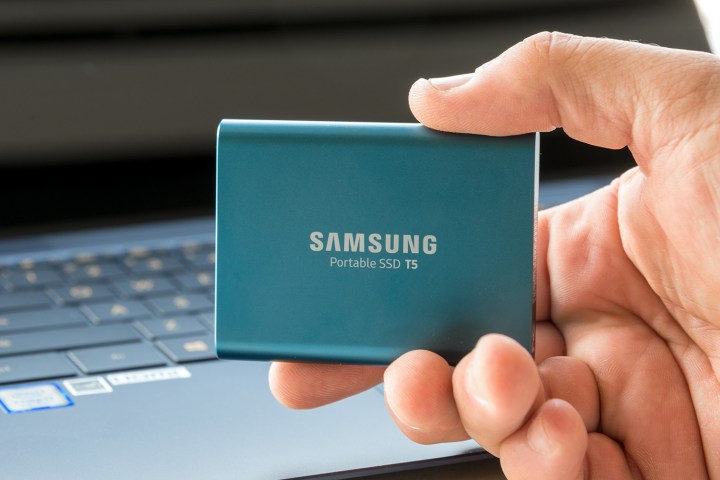
Storage capacity
Arguably the most essential specification to consider when buying an external drive is storage space. It does no good to buy a high-speed device with encryption and remote access if it’s not big enough to store all your data. You also don’t want to pay through the nose for a drive you’ll never even come close to filling.
What size of external drive is best? That depends on you.
If you want a device that’s good for transferring documents, photos, or other media from one device to the other, or just want a few tens of gigabytes of space to transfer files from system to system, a USB flash drive like the Corsair Survivor Stealth, might be a good idea. They're just $25 and give you 64GB of storage, which is enough to easily transfer thousands of photos or a few hundred videos between devices.
If you need something with a few terabytes of space but aren't too concerned about speed, then Western Digital's My Passport Ultra is a great drive with decent performance and multiple terabyte capacities. It's great for acting as a longer-term backup for your photos and videos, or transferring thousands of them from device to device.
If you need the ultimate in capacity, then look for the Western Digital My Book Duo. It's more NAS than external hard drive, but with 10s of terabytes of storage space, it's all the space you'll need for just about anything.
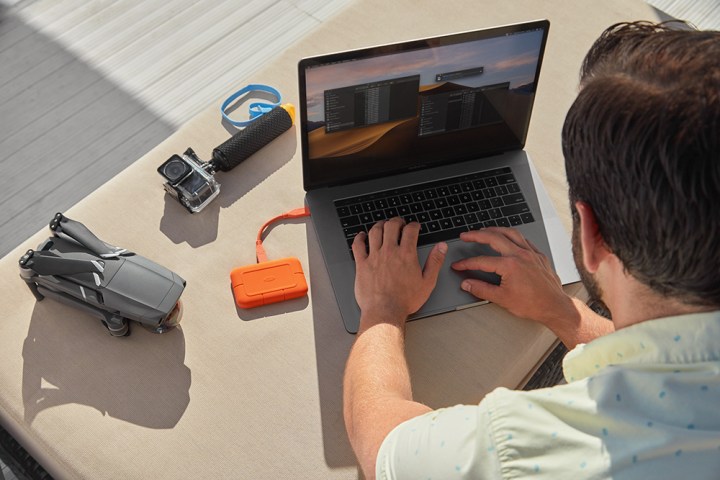
SSD vs. HDD
External drives are served up in two flavors: HDDs and SSDs. They both do things quite differently, but at the core of it, SSDs are faster than HDDs. They're more expensive, too.
HDDs (hard drive disk) use spinning magnetic disks to store data. Read/write heads change this data as necessary, so you hear their iconic spinning sounds. SSDs (solid-state drives) use tiny gate transistors in cells that can flip on or off based on electric pulses. They have no moving parts, hence the name.
SSDs are significantly faster than HDDs in many instances, but they get very expensive. HDDs are cheaper, but also larger, slower, and more easily damaged. For external drives, you'll get the fastest and more durable drive out of an SSD, like the excellent Samsung T5.

Transfer speed
The biggest external hard drives aren't always the best drives you can buy. Transfer speed is incredibly important, too. If you transfer files back and forth to an enormous drive regularly, you don’t want to wait forever for the transfer to complete.
Two main factors play a role in how fast your drive can operate: The underlying storage technology and the connector it uses.
Although some drives are faster than others, in general, SSDs can process data faster than HDDs. External SSDs tend to be more expensive than their HDD counterparts and often have less storage capacity. You don’t need one or the other, as there are larger SSDs you can buy for a premium price.
In terms of the connection between your external drive and your PC or mobile device, there are several standard options to consider. Most drives today use a USB interface, but the most recent generations have some distinct differences -- most notably with transfer speed.
USB 2.0 is an old standard, and if you’re doing anything but making infrequent small file transfers, avoid it -- its max transfer speed only reaches 480Mbps. The port is typically not color-coded on PCs.
USB connections beyond 2.0 can get somewhat confusing. You may see specifications listed as USB 3.0, USB 3.1 Gen1, or USB 3.2 Gen1. All three are essentially the same, providing speeds of up to 5Gbps and typically color-coded blue. Meanwhile, USB 3.1 Gen2 and USB 3.2 Gen2 also are the same, color-coded in red, and offer 10Gbps transfers.
The fastest, USB 3.2, or 3.2 2×2, offers up to 20Gbps.
USB-A is the most common (read: old school) connector type, featuring a rectangular box and a this-side-up-only connection. USB-C is newer, smaller, and more rounded, offering a reversible connector. Piggybacking this port is the DisplayPort protocol for video output. Some connectors use the USB-C port type but operate the Thunderbolt 3 or Thunderbolt 4 protocol with up to 40Gbps in transfer speed.
Some older devices use alternative connectors like eSATA and Firewire, but due to their reduced relevance, they should be avoided.
For the fastest possible external drive transfer speeds, you need a Thunderbolt NVMe SSD, like the Samsung X5.

Portability and durability
If you simply want an external drive for backups stored in your home, network-attached storage (NAS) devices may be a better bet. They typically sit as a stand-alone wired device on your local network, packing multiple drives and storage modes. Promise Technology, QNAP, and Synology are just three manufacturers that specialize in NAS devices.
However, if you want to keep your drive on you when out and about, portability is essential. It needs to be lightweight and small, so you can stuff it in a pocket or bag to access it immediately and quickly. Ideally, you want one that doesn’t require an external power cable, too.
Most external drives are far from weighty, and some are tiny, like the Samsung T5, offering huge digital storage capacity while being physically diminutive. On the other hand, SSDs tend to be a little smaller than their hard drive counterparts because they’re not housing stacked magnetic discs.
Another reason to consider an SSD over an HDD is durability. While modern-day external drives often come equipped with rugged casings to protect them against damage, the two technologies have very different physical makeups. With no moving parts, an SSD is more resistant to drop damage than a traditional hard drive and as a result is considerably more durable.
For a drive that's really durable, consider something like the Lacie Rugged.
Security
If the data stored on your external drive is sensitive in any way, encryption is a good idea. Many drives are compatible with software encryption solutions, and those are fine for most people.
For those who take their data security more seriously, you want to find a drive with hardware encryption. If you’re extremely safety conscious, you could even opt for a physical security system like the pin-code input on the Apricorn Aegis Padlock drive.
Some drives ship with strong casings to prevent physical tampering. While Kingston’s Ironkey flash drives don’t offer the same storage capacity as full-scale drives, they have a secondary security layer embedded in the printed circuit board (PCB), dipped in resin. This design makes it hard for anyone to physically access the memory chips inside the drive.
Compatibility
Out of the box, external hard drives are regularly formatted for a specific operating system. For example, an external drive formatted for Windows 10 may have problems working with MacOS, and vice versa. Some hard drives are formatted specifically for Linux, too.
This setup isn’t irreversible, however. You can reformat a hard drive or partition it to have different capabilities. But if you want to avoid the hassle, make sure the external drive is compatible with the target operating system.
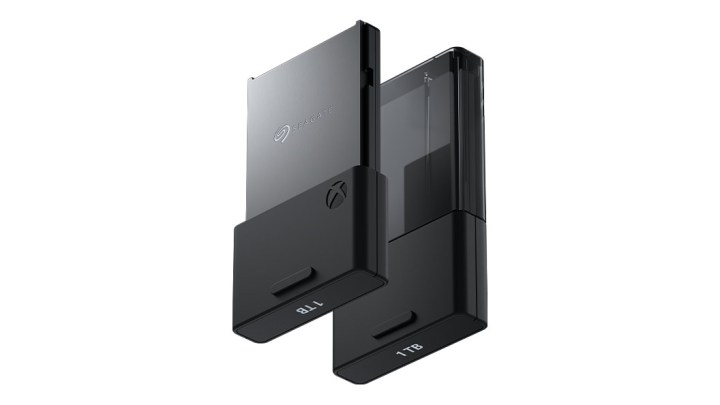
Gaming
Want an external drive for on-the-go gaming or to augment a console’s storage? Your needs may be slightly different from the average user.
Here SSD speed is even more critical, as a slower drive can increase waiting times and game responsiveness. Xbox Series X and S owners can utilize the Seagate Expansion Card, to emulate its fast internal storage. Other external SSDs can be used for older Xbox One and Xbox 360 games, but not Xbox Series S/X games.
You only can play Sony PlayStation 5 games on its internal SSD for now, though you can play PS4 games on an external SSD or HDD. They load far faster on an SSD, so it’s worth using one over the PS5’s faster USB-C connection, if possible.
Some models, like the Silicon Power Armor A60 drive, also have built-in storage for cables and military-grade protection, which are nice extras if you take your data with you on the go.
Extra features
Despite having covered all the bases on your product research, you’ll also want to consider any extra features before making your purchase.
One feature you’ll want to look for is an extended warranty. This can help cover the cost of a new drive if this one fails, and some companies, like Seagate, have packages to help you recover your data for a reduced fee.
You also should take note of the kinds of cables that accompany your drive. Some newer phones and laptops use USB-C or Thunderbolt 3 connections, but the drive you want might include a USB-A cable. If that’s the case, you can still purchase that drive, but you’ll also have to buy a different cable or an adapter, which will add to your overall cost.
It’s also worth checking out newer drives that have cutting-edge features such as USB cable charging capacity and the ability to connect to Wi-Fi.

